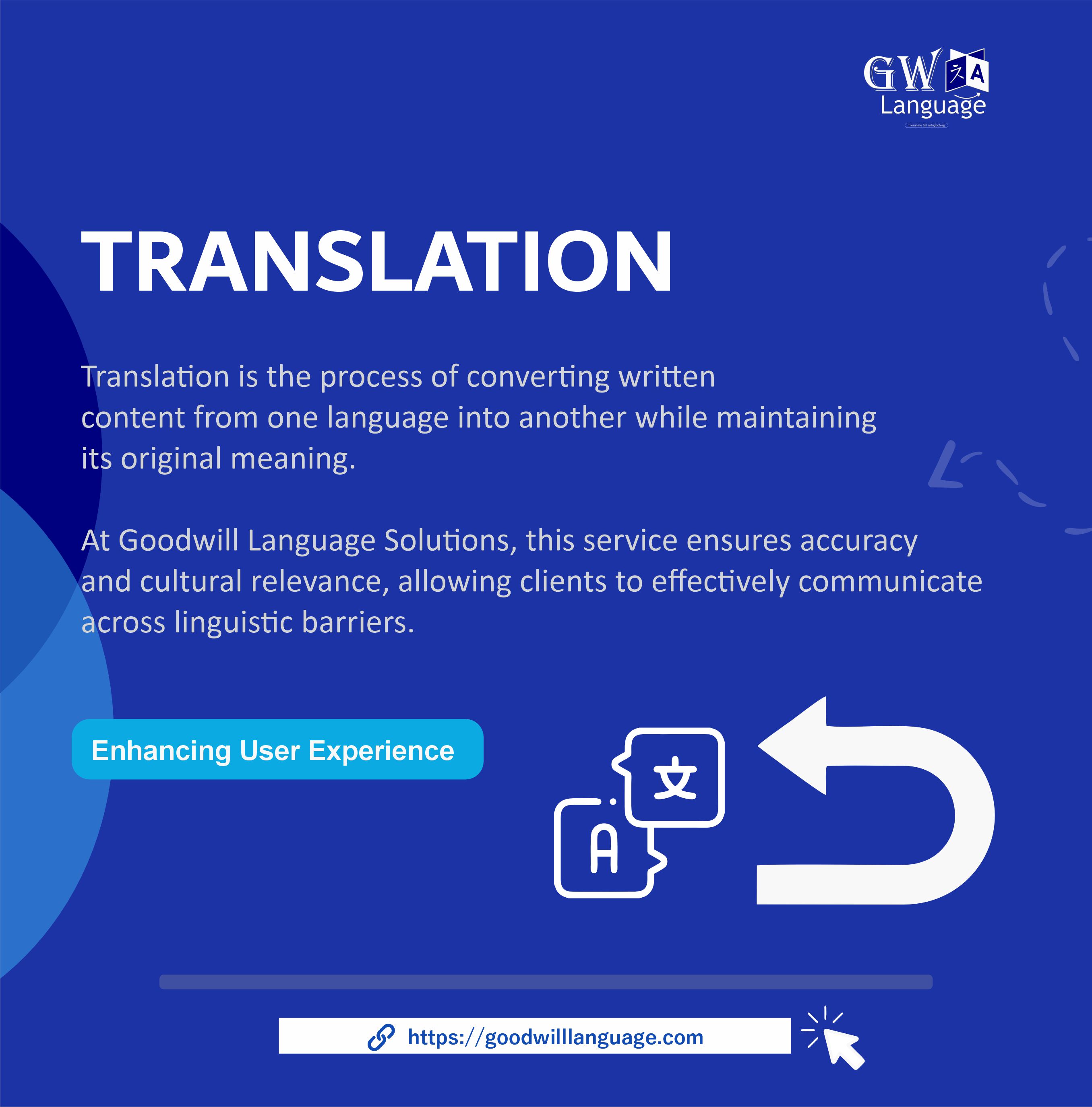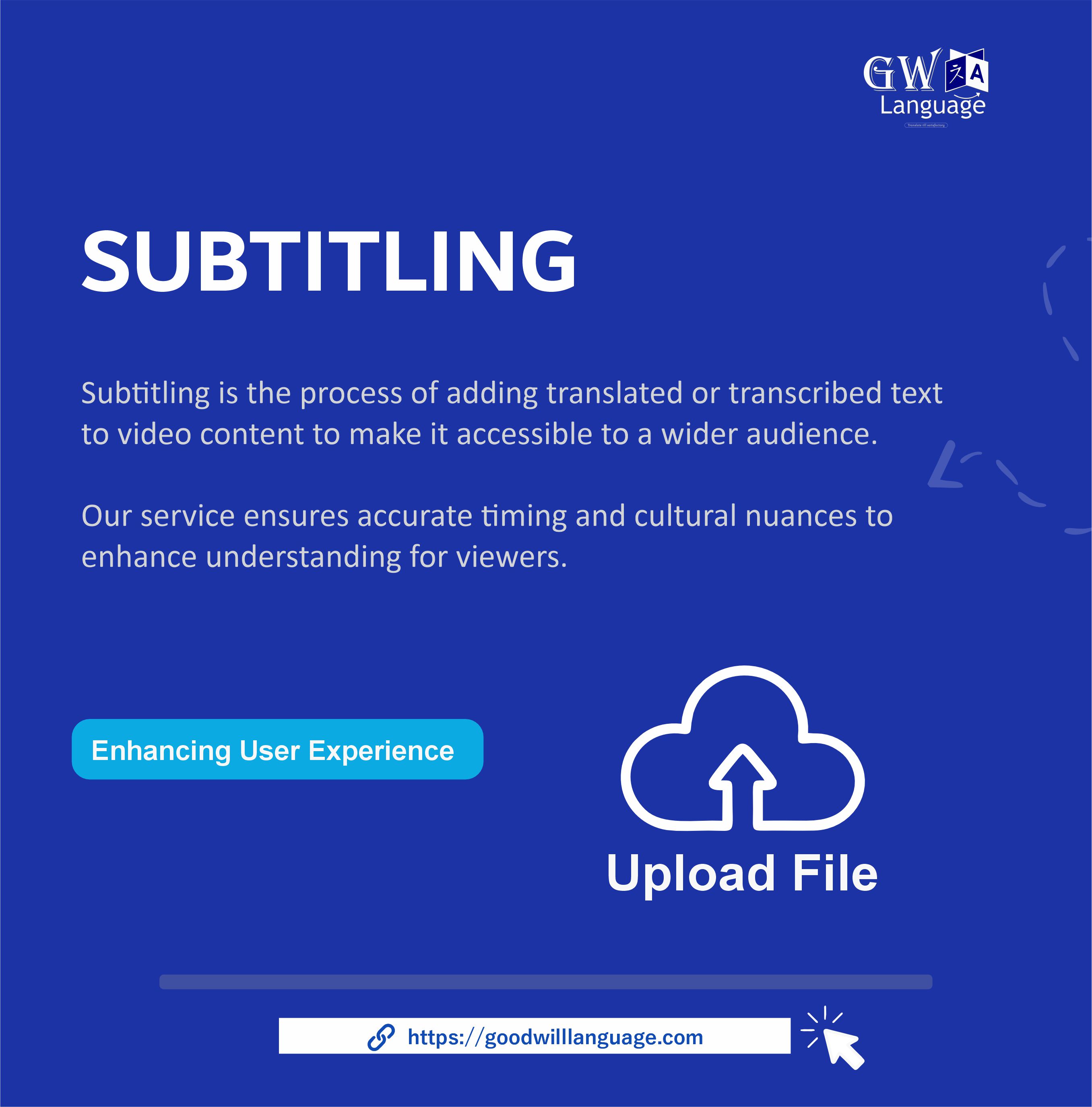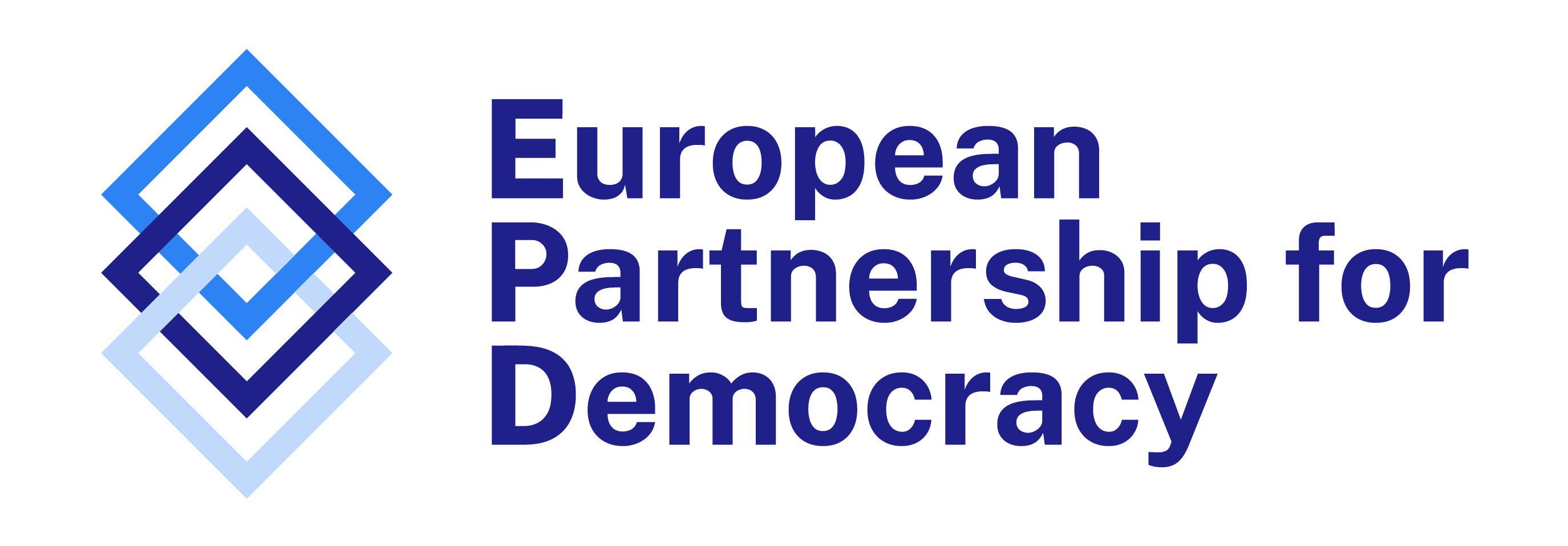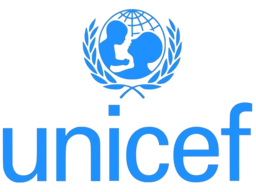
Expert linguists ensure accurate and high-quality translations.
Rigorous quality control guarantees error-free and polished results.
Client-centric approach focuses on exceeding client expectations.
Cutting-edge technology enhances efficiency and improves accuracy.
Confidentiality is paramount to protect sensitive client information.
Competitive pricing offers excellent value for exceptional service.

Converting written text from one language to another.

Converting audio/video to written text.

Converting spoken language from one language to another.

Displaying translated dialogue on screen.

Adding spoken narration to audio/video.

Providing instruction in foreign languages.
At Goodwill Language Solutions, we prioritize expertise. Our team comprises highly skilled and experienced linguists, each native speakers of their respective languages. They possess in-depth knowledge of various industries, ensuring accurate and culturally sensitive translations that effectively convey your message.

We are accredited by international professional organizations:




